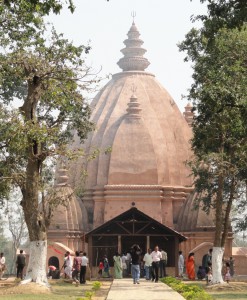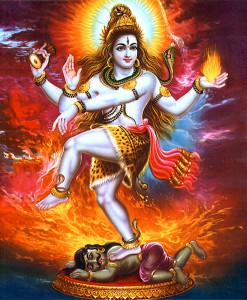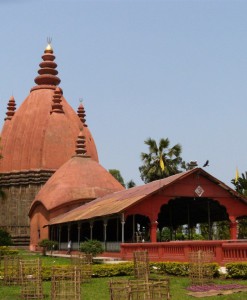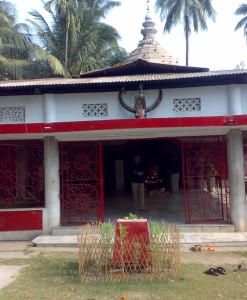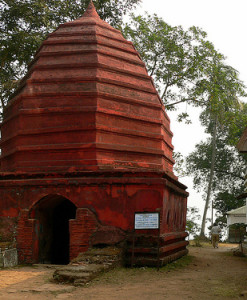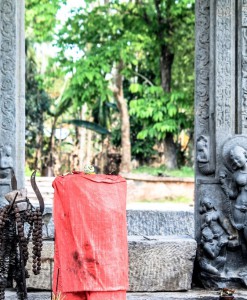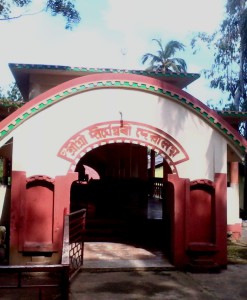No products in the cart.
The Navagraha Temple is found on the top of Chitrasal Hill (or Navagraha Hill), in Guwahati city, Assam, India. Enshrined in this temple are nine Shivalingams, representing the nine Celestial bodies, each covered with a colored garment symbolic of each of the celestial bodies, with a Shivaligam in the center symbolizing the sun. The Navagraha temple was built by Ahom King Rajeswar Singha in the late 18th century. It has been renovated in recent times during the late 1923-45.
Navagraha Temple, Guwahati;
- Temple History
- Architecture
- How To Reach The Temple
- Daily Poojas And Festivals
- Videos
- Additional Information
The present temple of Navagrahas in Guwahati was built during the time of King Rajesvar Singh in 1752 AD. The upper part (Sikhara) of the temple was destroyed by the great earthquake which occurred in old times and was rebuilt with corrugated iron-sheet. The ‘Garbhagriha’, built of brick, however, exists.
The Navagrahas or the nine planets thus are being represented in the Sashtras:
Firstly the Surya’s great chariot which has one wheel and is drawn by seven horses, while carrying a lotus in each of his hands, he wears an armour and has a shield over his breast with the beautiful straight hair, and is surrounded by a halo of light.
Secondly the great Chandra who is been represented in white colour, clothed in white garment who is surrounded by a halo and adorned with ornaments and garland of all sorts of flowers.
Thirdly one, Mangala who is represented in fire-like red colour, clothed in red garments, seated upon Simhasana, with three arms bearing ‘Gada’, ‘Sula’, ‘Sakti’ weapons and as one in an ‘Abhaya’ or ‘Varada’ pose.
Then, Buddha is being represented in yellow colour, clothed in yellow garment, with’ three arms bearing ‘Khadga’, ‘Khetaka’, and ‘Gada’ and in Varada pose.
In the fifth place is Brihaspati who is represented in yellow colour, clothed in golden yellow garments with three arms bearing ‘Kamandalu’, ‘Aksamala’, and ‘Danda’ and in Varada pose. Sometimes this planet is represented with two arms having a ‘Pustaka’ and an ‘Aksamala’.
Then sixth planet, Shukra represented by white colour, clothed in white garments, having four arms and one who bears the same weapons as Brihaspati. Shukra is sometimes represented with two hands bearing ‘Nidhi’ (treasure) and ‘Pustaka’.
The seventh planet, Shani is represented in black colour and being clothed in black garments, small in stature and somewhat lame in one leg. He has two arms bearing a Danda and an ‘Aksamala’ and sometimes in Varada pose.
The eighth is Rahu being represented on a ‘Simhasana’ or a silver chariot drawn by eight horses. According to some, it is possessed with four arms, three of which bear ‘Khadga’, ‘Khetaka’, and ‘Sula’ and in Varada pose and sometimes he possesses two arms carrying a book.
The last, ninth planet is the Ketu being represented in dark colour having two arms in Abhaya pose holding a ‘Gada’, and sometimes on a chariot drawn by ten horses.”
According to the inscriptions and recordings found on the walls of Navagraha temple, its origin dates back to the 18th century, to the reign of Ahom king Rajeswar Singha, son of Rudra Singha or Sukhrungphaa. A great earthquake destroyed a considerable portion of the temple a few centuries later, which was later rebuilt with ridged iron sheets. However, the Garbhagriha, built of brick, exists till date. Along with the temple, a tank was also excavated at some distance, to provide regular and easy water for the devotees who came to pay homage to the Gods. This tank, known as Silpukhuri, continues to supply water to the needy till date and is as full of water even today.
By Road: One can easily reach the Navagraha Temple by road from any part of Assam. One can also hire a taxi to reach the temple & also auto services are easily accessible.
By Rail: The Temple is well connected through nearest Guwahati railway station (3.3 km)
to major cities railway stations like Delhi, Agra, Mumbai, Chennai, Ajmer, Pali, Jaipur, Ahmedabad.
By Air: The Temple can be reached through nearest Guwahati Airport (24.4 Km) which is well connected with regular domestic flights to Delhi, Mumbai, Hyderabad, Bangalore, Chennai and other metropolitan cities.
The temple opens at 4:00 AM and closes at 9:00 PM. During this period rituals of lord Shiva are performed. Archana, Abhishekam and Arathi are the daily rituals performed in the temple.
Shiva Chaturdasi and Maha Shivratri are the festivals celebrated in this temple. During these days the temple is visited by many people to seek the divine blessings of lord Shiva.
In 1753 AD, the King Rajesvar Singh who built the Navagraha Temple also excavated a tank at a little distance from the temple so that the temple goers might have an easy and perennial supply of water. The tank being named as “Silpukhuri”, continues to be with full of water as it was when it was first excavated and supplies water daily to the needy.



